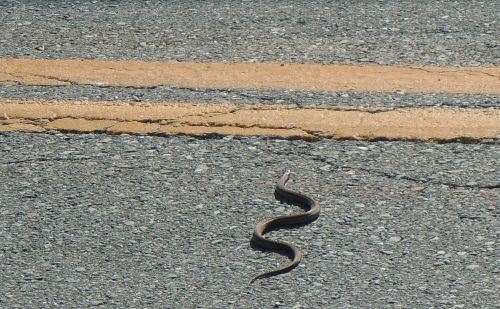You can’t stop progress. Maybe that’s true. But what is considered progress to one person is not necessarily the same for everyone.
In a province where elected officials and bureaucrats are especially sensitive to being called ‘backwards’ and ‘backwoodsy,’ on December 10th 2013, Halifax Regional Municipality Councillors voted unanimously to pave five gravel roads in the Flandrum Hill subdivision. Although property owners had been formally surveyed by HRM last Spring and the majority voted against paving the roads, Council decided they knew what was best for HRM. Since HRM’s own policy recommends that a minimum of 50% of the residents must be in favor unless it is in the best interest of HRM, one wonders what interests would be so great as to override the wishes of the majority?
Of course such decisions are easier to make when you’re not a homeowner looking at a $6,500.00 bill (calculated at $35 per linear foot of frontage). It’s also easier when you don’t have to consider environmental impact. An environmental study was not undertaken. However, that doesn’t mean the environment won’t be affected.
When warmed by the sun or tire friction, asphalt releases harmful greenhouse gases. During the paving process, fumes from the oil used to bind the aggregate are known to cause sickness in humans. Might be a good idea to keep children indoors when the roads are paved later this summer. Somebody ought to give the wildlife a heads-up too.
 Drainage considerations have to also be addressed with paved roads due to potential problems with run-off. Unlike a gravel road, pavement does not absorb precipitation. Though this isn’t as much of a concern for folks who live at the top of a hill, paved roads can potentially contribute to flooding in low-lying areas.
Drainage considerations have to also be addressed with paved roads due to potential problems with run-off. Unlike a gravel road, pavement does not absorb precipitation. Though this isn’t as much of a concern for folks who live at the top of a hill, paved roads can potentially contribute to flooding in low-lying areas.
Drivers are known to speed more on paved roads than gravel ones. With its steep incline, Flandrum Hill Road will most likely see an increase in speeding. Woe to the children who get in their way!
The cost of neglecting asphalt can be scary. Repeated freezing and thawing over the winter months takes a regular toll on all our Nova Scotia roads. It’s one thing for homeowners to share in the cost of paving roads initially, but what happens when a municipality has to bear the burden of increased maintenance costs without raising taxes? In recent years, some counties in the U.S. have converted their paved roads to gravel once again. See: Roads to Ruin: Towns Rip Up the Pavement
Many of us moved here because we liked the idea of living closer to nature. We have no bus service and we’re still on well water and septic. Gravel roads just seem to be another part of a lifestyle that the majority of us consider simply part of rural living.
Progress means getting nearer to the place you want to be. And if you have taken a wrong turning, then to go forward does not get you any nearer.
If you are on the wrong road, progress means doing an about-turn and walking back to the right road; and in that case the man who turns back soonest is the most progressive man.
~ C.S. Lewis
All photographs and text copyright Amy-Lynn Bell 2014
























